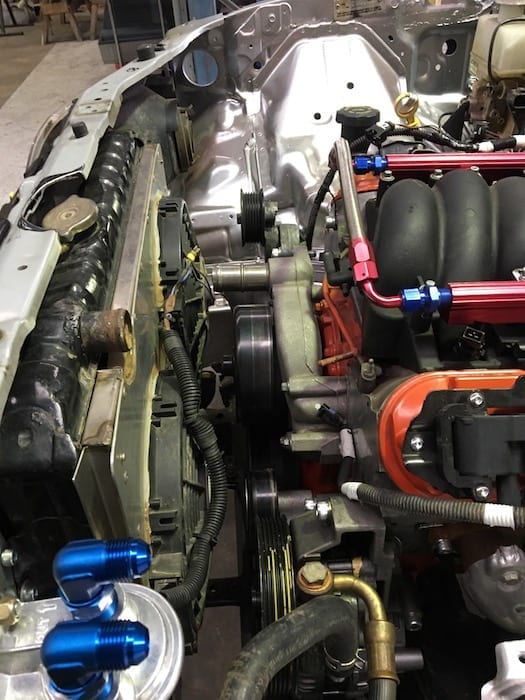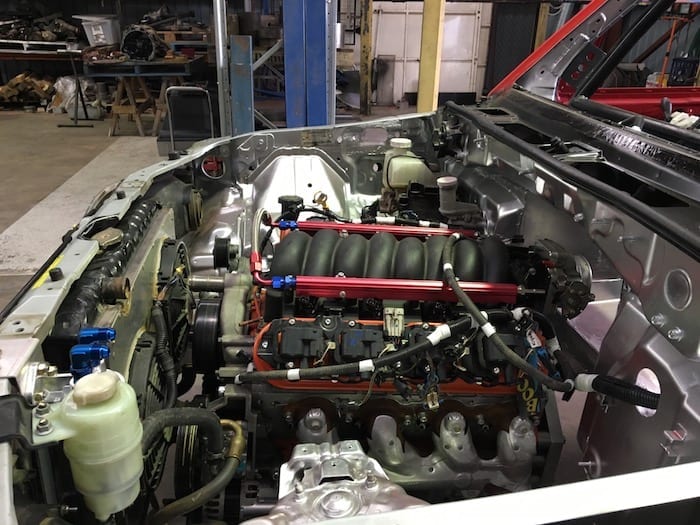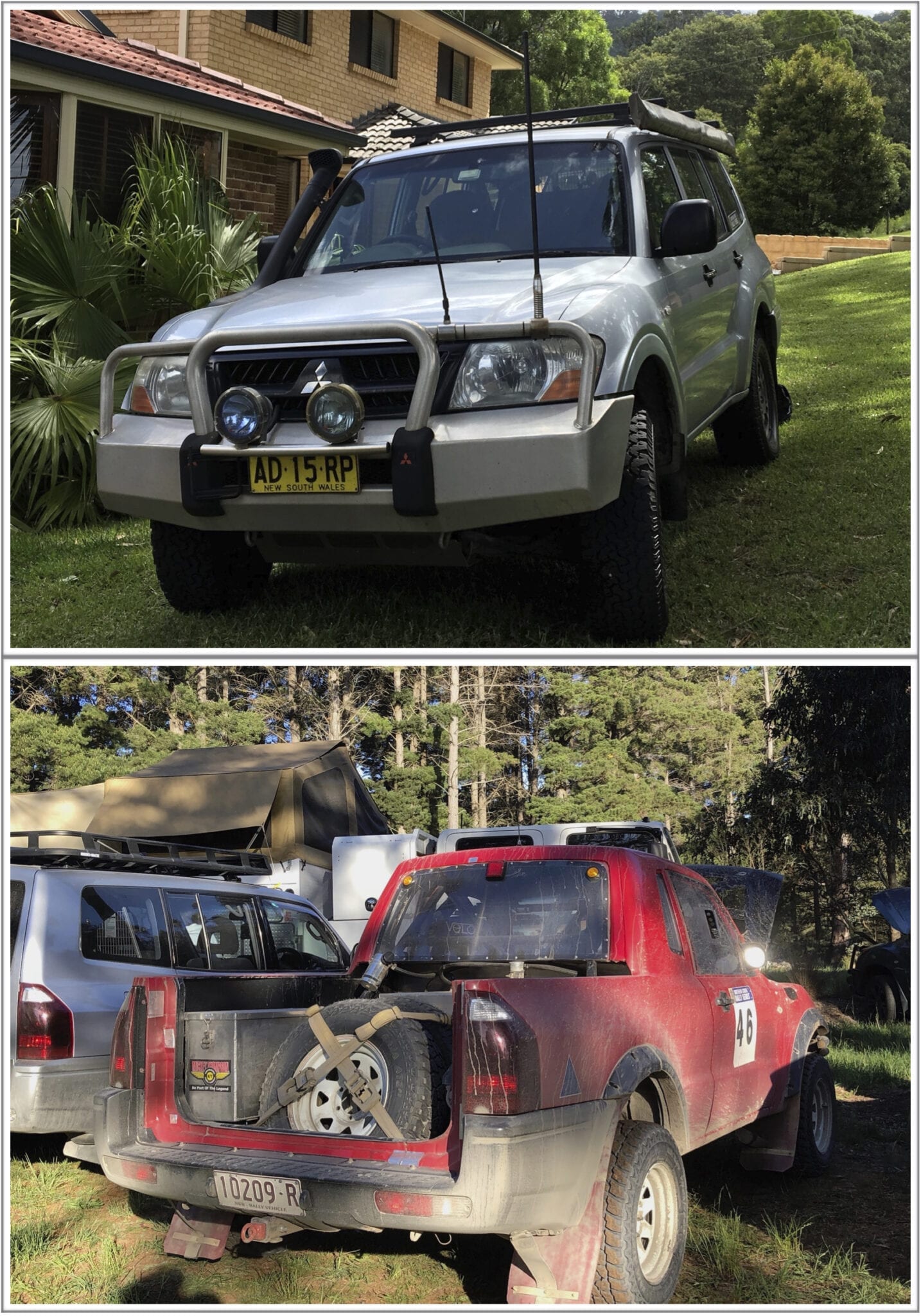Why Is The Motor So Far Forward In The Engine Bay?
Last time, we dropped the LS1 into the engine bay to see what problems we might encounter.
That article triggered lots of questions from you. Why is it so far forward? Why isn’t it lower down? Why is the air intake at the back? Why not use a standard air filter?
We’ll attempt to answer these questions here.
Why Does The Motor Sit So Far Forward?
Well, it’s quite simple really – ease of access.

Many off-road racing Pajeros have the engine way back and down low. This is for low centre of gravity and front-to-back weight balance. But this causes many problems:
- The back 4 cylinders are buried in the firewall. To work on the back of the engine, you usually need to drop the motor out. Not easy – this means also needing to remove the front suspension cradle. Hardly ideal when you’re on a low budget.
- Depending on the gearbox, the gearsticks can be way too far back. Not ideal when you’re racing.
- Major mods are needed to exhaust manifolds, tail shafts, engine mounts… the list goes on. And the $$ keep racking up.
Won’t The Front Of The Motor Hit The Radiator When It Moves Around?
No. Sure there’ll be some body flex and the engine will move around a bit. But remember, the monocoque chassis will be locked up by the roll cage. So body twist will be negligible.
Front and rear engine mounts are not standard. They’re handmade with bushes. The mounts isolate vibration but don’t allow much movement at all.
Why Doesn’t It Sit Lower?
The front diff dictates how low the motor can sit. Fitting a reverse sump (deepest part at the rear instead of the front) allows it to sit where you see it in this photo.

Why Not Use A Standard Air Filter?
These motors need a lot of air when running at full noise for extended amounts of time. A standard air filter simply won’t cut it. A snorkel won’t help much either, there’s simply not enough airflow through a standard filter.
Why Have The Throttle Body At The Back?
Simply to get the engine further forward. The throttle body protrudes out the front of the motor in standard form. Add inlet hoses and it takes up lots of space.

There is a way around this – mount the radiator behind the cab. Many off-road vehicles have this set-up. But again, it adds complexity and cost.
Another advantage of rear-mounting the throttle body has to do with filter location. I said earlier that a standard air filter just can’t cope. So obviously larger – or twin – filters are needed. By removing them from the engine bay, you get a couple of wins:
- Access to the engine is easier. No large filter box, no air hoses, no intake ducting.
- The engine can move forward, avoiding the problems the problems discussed above – see “Why Does The Motor Sit So Far Forward?”
So Where Will The Air Filters Be?
In the cab, in front of the navigator’s feet.


Why? Well, remember this cab is longer than a standard single cab. So the navigator can sit well back. Again, why? To give the driver better line of sight and to line the navigator’s shoulders up with the B-pillar for extra protection.
Sure, the induction noise will be pretty savage. But given the proximity to a V8 without much of a muffler and a gearbox with straight cut gears, induction noise shouldn’t be an issue!
Are These Races Really That Dusty?
One word – yes. Why? On a cool, calm morning the dust simply doesn’t move away. The first car stirs up the dust and it hangs in the air. As each car passes, it gets thicker until driver and navigator are effectively running blind.
This video should give you some idea of what I mean.
Even worse, some courses double back on themselves. So they might run up a fence line, go through a gate then run back down the other side – straight through their own dust!
And finally, imagine somehow you catch up to the Triton in the above video and you’re trying to get past. Your car will be sucking in all that dust.
So hopefully this answers a few of your questions.
Next time: What will we turn this old girl into? Maybe a ute. Hmmm…

Get your BONUS Guide:
Download “What’s Involved In Building An Off Road Race Car”
+
Cable Sizing Calculators… And More!
at our FREE RESOURCES Page!
Any questions or comments? Go to the Comments below or join us on Pinterest, Facebook or YouTube.
Any errors or omissions are mine alone.
Want to know more about off road racing? Then go here.
